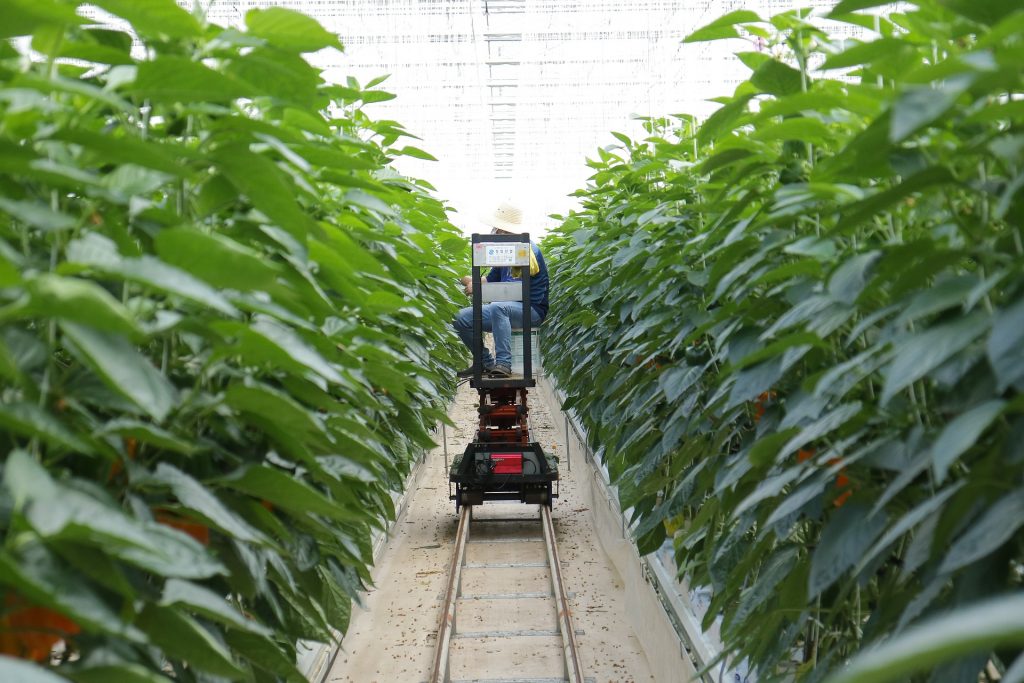This article is a guest post by Jane Marsh, Editor-in-chief of Environment.co. All views/opinions/suggestions are that of the guest writer. This Website may or may not subscribe to them.
How does an industry keep up with a growing population? What does the farming industry need to do to feed nearly 10 billion people by the year 2050?
The answer to those questions involves smart farming. Every human being on this planet relies on the agriculture sector to provide fresh produce, dairy, and meat. Farming has strayed from the once-familiar family farming to industrial agriculture, but soon, the methods of industrial agriculture won’t be enough to support the population.
With the rise of technology in nearly every industry, agriculture has had to jump on the trend. Thankfully, the benefits of IoT-based farm management outweigh the challenges farmers must face to cope with continually advancing technology. As a result, farmers everywhere have risen to the occasion to implement the Internet of Things (IoT) into their daily farming operations.
The Rise of Smart Agriculture
The term “smart agriculture” is a relatively new one. It describes the application of technology to farming in general and adding Internet of Things solutions. These include livestock monitoring, the use of drones, tracking vehicles and produce, and more.
One of the significant factors of smart agriculture is that it uses technology to grow food cleanly and sustainably for the growing population. Sensors help farmers monitor crops and irrigation systems. In addition, all devices connect, meaning the farmers can quickly and easily view any parameters of immediate interest.
One of the concerns people have with smart farming is that robots will steal jobs. However, there has been only a 1% decline in agricultural employment.
Benefits of IoT-Based Farm Management
There are many benefits when it comes to adopting IoT-based farm management. From sustainability to efficiency, smart farming allows farmers to accomplish nearly anything from a connected source. Below are just some of the benefits of smart agriculture.
Resource Conservation
Thanks to monitoring and advanced systems, smart farming allows for resource conservation. Agricultural IoT solutions focus on optimizing resources like water, land, and energy. They aim to make the most of the land while only using what they need.
Farmers can provide just enough resources to individual plants for optimal health and growth. Plus, sensors tell farmers if a plant needs more water or a particular nutrient, and how much, so the resource isn’t exploited.
Improved Efficiency
Farmers now are having to grow food in changing conditions, degraded soils, and with declining land availability. Smart farming has enabled farmers to monitor their crops and livestock and can prevent issues that may arise before they even happen.
Plus, the automation aspect of IoT farming expedites farming operations for increased productivity and efficiency. Therefore, having an efficient system is critical for farmers to get their jobs done.
Lowered Cost
Overall, costs for IoT-based farm management are lower. This is because many of the tasks are automated, thanks to robots that can fertilize, harvest, and water crops. Again, this reduces resource consumption, which lowers the costs of water and energy. Plus, human error is nearly eliminated, so most products are suitable for selling, which means there is little waste.
Continual Data Insight
Monitors and sensors provide farmers with constant data insight. They can visualize soil moisture, sunlight intensity, weather conditions, and production levels from one screen and access it from anywhere. The data also allows them to research further how they can best increase yields.
Applications of Smart Farming
As technology advances, the applications of smart farming advance as well. Here are some of the most common forms of smart farming today:
- Drones: Drones are one of the most used devices in IoT farming. They can monitor fields, plant seeds, and spray pesticides. Plus, they provide farmers with accurate imaging of fields and livestock.
- Precision farming: This makes the whole farming process more controlled and efficient through technology like sensors, robotics, automated vehicles, and other systems.
- Smart greenhouses: Inside smart greenhouses, monitoring systems make the perfect conditions for any plant to grow. This eliminates the need for manual work and monitoring so the plants grow without human interference.
- Livestock and crop monitoring: Devices and cameras are added to livestock or are placed within crops to monitor conditions. If an animal is sick or has a significant difference in its bodily functions, the farmer is notified and can tend to it to get it back to good health. The same goes for crop monitoring as well.
These applications in IoT farming allow farmers and ranchers to collect data that helps them make their farms more efficient and effective in feeding a growing population.
The IoT of Farming
Thanks to the internet and technological advancements in IoT-based farm management, today’s farmers will be able to feed our growing population. Managing a farm is no simple task, but the IoT makes it possible for farmers and ranchers to take care of their farms effectively.
Image by seungwoo yon from Pixabay
About The Author
Jane works as the Founder and Editor-in-Chief of Environment.co. She covers topics on energy and green technology.

